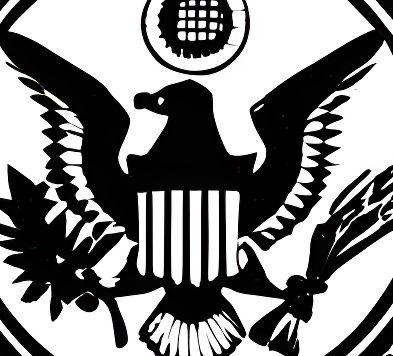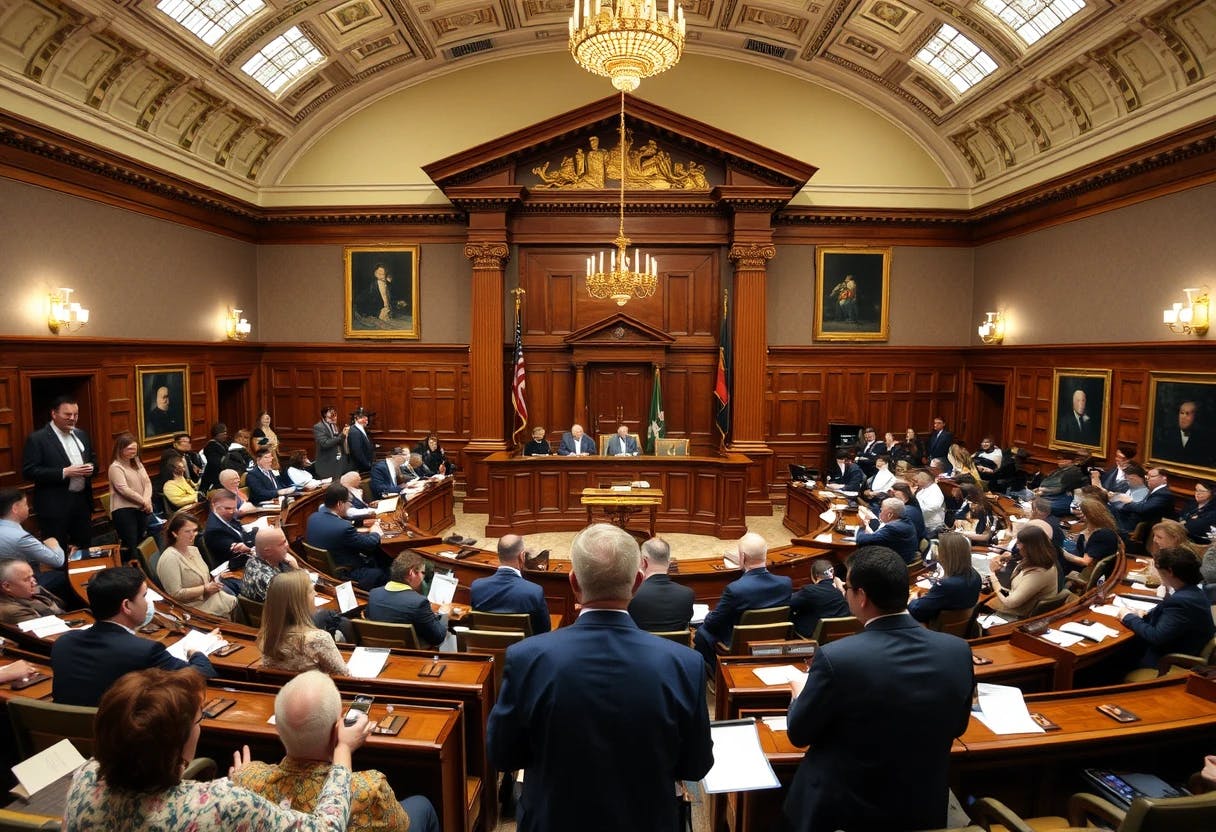SEC v. Ripple Labs, Inc., Court Filing, retrieved on August 05, 2024, is part of HackerNoon’s Legal PDF Series. You can jump to any part of this filing here. This part is 2 of 5.
DISCUSSION
“Once [a] district court has found federal securities law violations, it has broad equitable power to fashion appropriate remedies[.]” SEC v. First Jersey Sec., Inc., 101 F.3d 1450, 1474 (2d Cir. 1996). Such remedies may include injunctive relief, disgorgement of ill-gotten profits, and civil penalties. SEC v. Frohling, 851 F.3d 132, 138 (2d Cir. 2016). The SEC asks for all three.
I. Injunctive Relief
A. Legal Standard
“Injunctive relief is expressly authorized by Congress to proscribe future violations of federal securities laws.” SEC v. Cavanagh, 155 F.3d 129, 135 (2d Cir. 1998) (citing 15 U.S.C. § 78u(d)). “Such relief is warranted if there is a reasonable likelihood that [a] defendant[ ] will commit future violations of the securities laws.” SEC v. Am. Growth Funding II, LLC, No. 16 Civ. 828, 2019 WL 4623504, at *1 (S.D.N.Y. Sept. 24, 2019) (citing SEC v. Commonwealth Chem. Sec., Inc., 574 F.2d 90, 99–100 (2d Cir. 1978)). To award injunctive relief, “a court must look beyond the mere facts of past violations and demonstrate a realistic likelihood of recurrence.” In re Rsrv. Fund Sec. & Derivative Litig., No. 09 Civ. 4346, 2013 WL 5432334, at *22 (S.D.N.Y. Sept. 30, 2013) (quotation marks and citations omitted). To determine whether injunctive relief is appropriate, courts are directed to consider:
[1] the fact that the defendant has been found liable for illegal conduct; [2] the degree of scienter involved; [3] whether the infraction is an “isolated occurrence;” [4] whether defendant continues to maintain that his past conduct was blameless; and [5] whether, because of his professional occupation, the defendant might be in a position where future violations could be anticipated.
Cavanagh, 155 F.3d at 135 (quoting Commonwealth Chem. Sec., Inc., 574 F.2d at 100).
B. Application
The SEC asks the Court to enjoin Ripple from “violating Section 5 and from conducting an unregistered offering of Institutional Sales of XRP.” SEC Mem. at 4. Ripple argues that the SEC has failed to show that an injunction is warranted. See Ripple Opp. at 2–16. The Court agrees with the SEC.
As to the first and third Cavanagh factors, Ripple has been found liable for violating Section 5 in its sales of XRP to the Institutional Buyers. Order at 22. These violations were not isolated: they spanned eight years and involved forty-one counterparties. Id. at 4; Long Decl. ¶ 4, ECF No. 957-1; see SEC v. Fowler, 440 F. Supp. 3d 284, 301 (S.D.N.Y. 2020) (offenses not isolated when they involved “13 clients over the course of three years”).
On the second Cavanagh factor, the degree of scienter, the SEC contends that Ripple’s violations “involved, at least, a reckless disregard for the law.” SEC Mem. at 4. The SEC notes that in February 2012, before the XRP Ledger was publicly launched, Ripple received a memorandum from the Perkins Coie LLP law firm advising it that “if sold to investors, XRP tokens are likely to be securities.” Order at 7 (cleaned up). A subsequent Perkins Coie memorandum counseled that “although we believe that a compelling argument can be made that XRP tokens do not constitute ‘securities’ under federal securities laws, given the lack of applicable case law, we believe that there is some risk, albeit small, that the SEC disagrees with our analysis.” Id. at 8 (cleaned up). The law firm also advised Ripple that the more it promoted XRP as an investment opportunity, “the more likely it is that the SEC will take action.” Id. Larsen testified that after receiving the second Perkins Coie memorandum, Ripple took steps to ensure compliance with its advice. Id. at 32.
At summary judgment, the Court found that a genuine issue of material fact remained as to whether Larsen and Garlinghouse had recklessly disregarded the securities laws. Id. at 31–33. Because the SEC has adduced no new facts to support a finding of recklessness at this stage, the Court finds that Ripple’s scienter, too, is inconclusive. See SEC v. Haligiannis, 470 F. Supp. 2d 373, 381–82 (S.D.N.Y. 2007) (collecting cases imputing the scienter of a corporate agent to the corporation). Although the SEC points to Ripple’s profit motive to avoid registration and disclosure, SEC Mem. at 5, this fact alone does not support an inference that Ripple recklessly disregarded regulatory requirements in making its business decisions. Cf. Prickett v. N.Y. Life Ins. Co., 896 F. Supp. 2d 236, 247 (S.D.N.Y. 2012) (noting that, in the common-law fraud context, “the profit motive common to all businesses is insufficient to establish scienter”).
On the fourth Cavanagh factor, the defendant’s willingness (or unwillingness) to accept blame, the SEC points to a number of post-Order statements made by Ripple and its corporate agents to argue that “Ripple has not accepted responsibility for its violations.” SEC Mem. at 6. Ripple, in turn, notes that it has acknowledged the Court’s ruling on the Institutional Sales in each of its quarterly market reports and contends that the other cited statements are taken out of context. Ripple Opp. at 14–16. Having considered the post-Order statements, the Court does not find that Ripple has “continued a campaign of def[l]ecting blame.” SEC Mem. at 6. Although Ripple and its employees have largely emphasized the favorable aspects of the Order in their public statements, Ripple has also repeatedly acknowledged the Court’s holding as to its Institutional Sales. See Long Decl. ¶ 5. Ripple’s post-Order statements do not rise to the level of blame-shifting required to justify injunctive relief based on this factor alone. E.g., SEC v. Mattessich, No. 18 Civ. 5884, 2022 WL 16948236, at *6–7 (S.D.N.Y. Nov. 15, 2022) (citing defendant’s “continued protestations that his conduct was blameless”).
Ripple’s actions, however, are another story. Relevant to the fourth and fifth Cavanagh factors, the SEC asserts that Ripple “continues to sell [XRP], unregistered,” to Institutional Buyers—specifically, in “continu[ing] to execute contracts for unregistered sales of XRP in direct [on-demand liquidity (‘ODL’)] transactions.”[4] SEC Mem. at 8. Ripple admits that after the Order was issued, it has continued to sell XRP in ODL transactions. Ripple Opp. at 6–7. It also concedes that the Order defined Institutional Sales as including sales to “ODL customers.” Id. at 9 (citing Order at 4). However, Ripple argues that its “ongoing ODL Sales do not have the key characteristics that this Court relied on in finding that Ripple’s Institutional Sales were sales of investment contracts.” Id. Not so. Although the Court noted that “some Institutional Buyers agreed to lockup provisions or resale restrictions”—features “inconsistent with the notion that XRP was used as a currency or for some other consumptive use”—the Court did not hold that a contract lacking these features is ipso facto lawful under Section 5. Order at 21–22 (emphasis added). Ripple attempts to relitigate the Court’s inclusion of ODL transactions in Institutional Sales, see ECF No. 825 at 6–7, while at the same time suggesting that “[r]emedies briefing is not the time or place” to analyze the ODL transactions in detail, Ripple Opp. at 9. The company cannot have it both ways.
To be clear, the Court does not today hold that Ripple’s post-Complaint sales have violated Section 5.[5] Rather, the Court finds that Ripple’s willingness to push the boundaries of the Order evinces a likelihood that it will eventually (if it has not already) cross the line. On balance, the Court finds that there is a reasonable probability of future violations, meriting the issuance of an injunction.
Turning to the scope of the injunction, Ripple first contends that Part I of the SEC’s Proposed Judgment—which “permanently restrain[s] and enjoin[s] [Ripple] from violating Section 5 of the Securities Act,” Proposed Judgment at 2—is an unhelpfully vague “directive not to violate” the law. Ripple Opp. at 16. But, the Second Circuit has found that an injunction that “merely parrot[s]” statutory language is proper. SEC v. Manor Nursing Ctrs., Inc., 458 F.2d 1082, 1103 (2d Cir. 1972). Courts in this Circuit routinely impose such injunctions in securities cases. See SEC Reply at 7 (collecting cases); e.g., SEC v. Fowler, 17 Civ. 139, ECF No. 205 (S.D.N.Y. 2020); SEC v. Bronson, 12 Civ. 6421, ECF No. 186 (S.D.N.Y. 2017).
Ripple also argues that Part II of the Proposed Judgment, which enjoins it from “conducting an unregistered offering of Institutional Sales,” Proposed Judgment at 3, should be altered to clarify that “it does not bar ODL sales, does not bar extraterritorial conduct, and does not bar sales that qualify for exemptions from registration,” Ripple Opp. at 17. The Court agrees that the SEC’s proposed language is too categorical and, in any case, duplicative of behavior proscribed by Part I of the Proposed Judgment. The Court will, therefore, omit the SEC’s proposed Part II.
Finally, Ripple asks the Court to “waive the ‘bad actor disqualification’ provisions of § 230.506(d)(1), which prevent an enjoined issuer from using the SEC’s Regulation D exemption for certain private securities offerings.” Ripple Opp. at 17. Although the Court has the discretion to do so, see 17 C.F.R. § 230.506(d)(2)(iii), Ripple cites no authority that persuades the Court that judicial waiver is necessary or appropriate here.
Accordingly, the SEC’s request for injunctive relief is GRANTED, and the Court will impose a permanent injunction consistent with Part I of the Proposed Judgment.
Continue Reading Here.
About HackerNoon Legal PDF Series: We bring you the most important technical and insightful public domain court case filings.
This court case retrieved on August 07, 2024, dropbox.com is part of the public domain. The court-created documents are works of the federal government, and under copyright law, are automatically placed in the public domain and may be shared without legal restriction.
[4] “ODL facilitates cross-border transactions by allowing customers to exchange fiat currency (for example, U.S. dollars) for XRP and then the XRP for another fiat currency (for example, Mexican pesos).” Order at 3.
[5] Ripple notes that “most of [its] ODL business is outside the United States,” where its contracts are governed by foreign law, and that Ripple now ensures that “all new ODL customers have at least $5 million in total assets, so that they are ‘accredited investor[s]’ under 17 C.F.R. § 230.501(a)(3).” Ripple Opp. at 7–8 (citation omitted). Whatever merit these defenses may have, they are not determinative of the question before the Court: whether the SEC has shown a risk of future violations.

